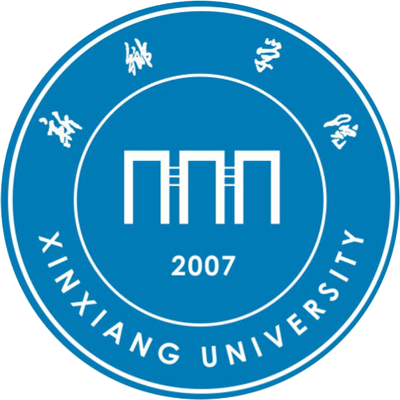详细信息
基于产量效应的间作紫花苜蓿/禾本科牧草光能利用特征
Characteristics of light energy utilization of intercropping alfalfa/gramineae forage based on yield effect
文献类型:期刊文献
中文题名:基于产量效应的间作紫花苜蓿/禾本科牧草光能利用特征
英文题名:Characteristics of light energy utilization of intercropping alfalfa/gramineae forage based on yield effect
作者:蔺芳[1,2];刘晓静[1];童长春[1];吴勇[1]
第一作者:蔺芳
机构:[1]甘肃农业大学草业学院,兰州730070;[2]新乡学院生命科学技术学院,河南新乡453000
第一机构:甘肃农业大学草业学院,兰州730070
年份:2020
卷号:31
期号:9
起止页码:2963-2976
中文期刊名:应用生态学报
外文期刊名:Chinese Journal of Applied Ecology
收录:CSTPCD;;Scopus;北大核心:【北大核心2017】;CSCD:【CSCD2019_2020】;PubMed;
基金:甘肃农业大学科技创新基金项目(GSAU-XKJS-2018-008);甘肃省现代农业产业技术体系-草食畜产业体系项目(GARS-CS-3);国家自然科学基金项目(31460622);甘肃省草原技术推广总站项目(XMXZGSNDXY201802)资助。
语种:中文
中文关键词:紫花苜蓿;禾本科牧草;间作;产量效应;光能利用
外文关键词:alfalfa;gramineous forage grass;intercropping;yield effect;light energy utilization
摘要:为探究紫花苜蓿/禾本科牧草间作下光能利用特性、光能利用诸因素的产量效应及其调控机理,通过2017—2019年3年田间试验,以紫花苜蓿、饲用小黑麦(C3植物)、饲用玉米(C4植物)3种单作模式为对照,研究了紫花苜蓿/小黑麦和紫花苜蓿/玉米两种间作模式下的产量效应、光能利用各因子对产量形成的影响、光能利用特征差异及机理。结果表明:两种间作模式的土地当量比均大于1,表明两种间作模式的土地利用率都高于单作,均有高于单作的产量效益,且增产潜力较大的是紫花苜蓿/小黑麦间作模式。光能利用各因子对产量的贡献依次是:叶面积指数(1.531)>净光合速率(0.882)>胞间CO_2浓度(0.282)>蒸腾速率(-0.229)>冠层开度(-0.291)>光合有效辐射截获率(-0.681)>气孔导度(-0.751)。其中,叶面积指数不仅是表征光合能力的重要指标之一,更是以收获营养体为目标的牧草作物产量的重要构成因子,光合特性诸因素中净光合速率是影响产量的主要因子。与单作相比,间作下紫花苜蓿、小黑麦、玉米的净光合速率均存在差异,且表现为相同的规律。间作下净光合速率提高的主要途径为:小黑麦和玉米通过增强CO_2的羧化固定能力,提高对强光的利用能力,从而提高净光合速率,促进产量增加;而紫花苜蓿则是通过提高功能叶的叶绿素b含量,改变叶绿素构成,增强对光能的收集和传递,从而提高净光合速率,促进其在弱光下光合能力的提高和正常生长。
Based on field experiments in 2017-2019,we examined the characteristics,yield effect and regulatory mechanism of light energy utilization in alfalfa/gramineous forage grass intercropping.With monoculture of alfalfa,forage triticale(C3 plant),and forage maize(C4 plant)as control,we measured the yield effect,the effect of light energy utilization factor on yield formation,the characteristic difference and mechanism of light energy utilization under alfalfa/triticale and alfalfa/maize intercropping patterns.Results showed that land equivalent ratios of both intercropping patterns were all greater than 1,indicating that land utilization ratio and yield benefit of the two intercropping patterns were higher than that of monoculture,among which alfalfa/triticale intercropping pattern was the most promising one.The contribution of light energy utilization factors to yield was following an order of leaf area index(1.531)>net photosynthetic rate(0.882)>intercellular CO2 concentration(0.282)>transpiration rate(-0.229)>canopy opening(-0.291)>PAR interception rate(-0.681)>stomatal conductance(-0.751).Among them,leaf area index was not only one of the important indices to characterize photosynthetic capacity,but also an important component factor of forage crop yield aiming at harvesting nutrients.Therefore,among all factors of photosynthetic characteristics,net photosynthetic rate was the main factor affecting yield.The net photosynthetic rate of alfalfa,triticale and maize under intercropping showed the same pattern,and being different from that of monoculture.The main ways for intercropping to increase net photosynthetic rate included:triticale and maize increased net photosynthetic rate and yield by enhancing the carboxylation fixation capacity of CO2 and the utilization capacity of strong light,while alfalfa could improve its net photosynthetic rate and promote growth under low light,by increasing the content of chlorophyll b in functional leaves,changing chlorophyll composition and enhancing the collection and transmission of light energy.
参考文献:
![]() 正在载入数据...
正在载入数据...


